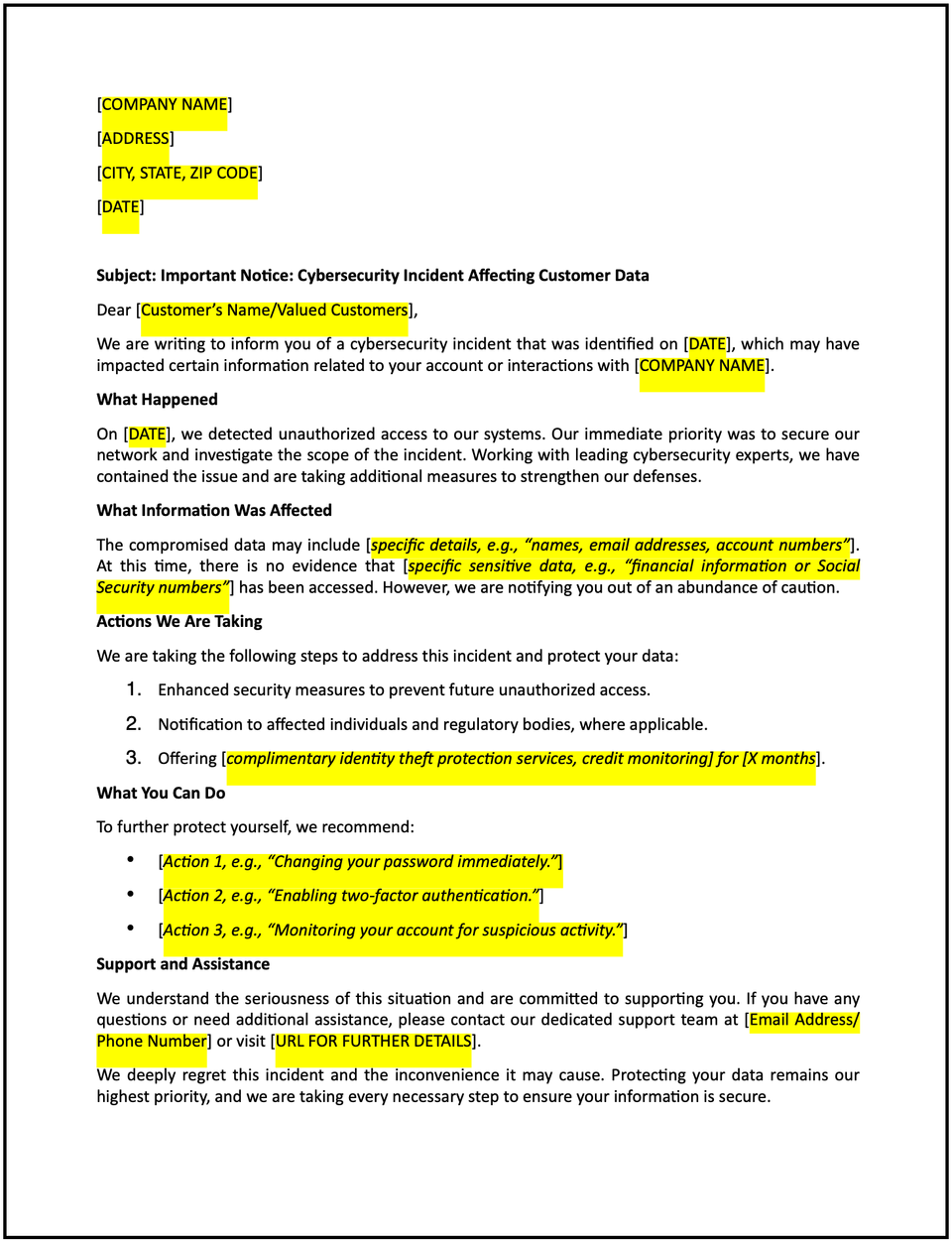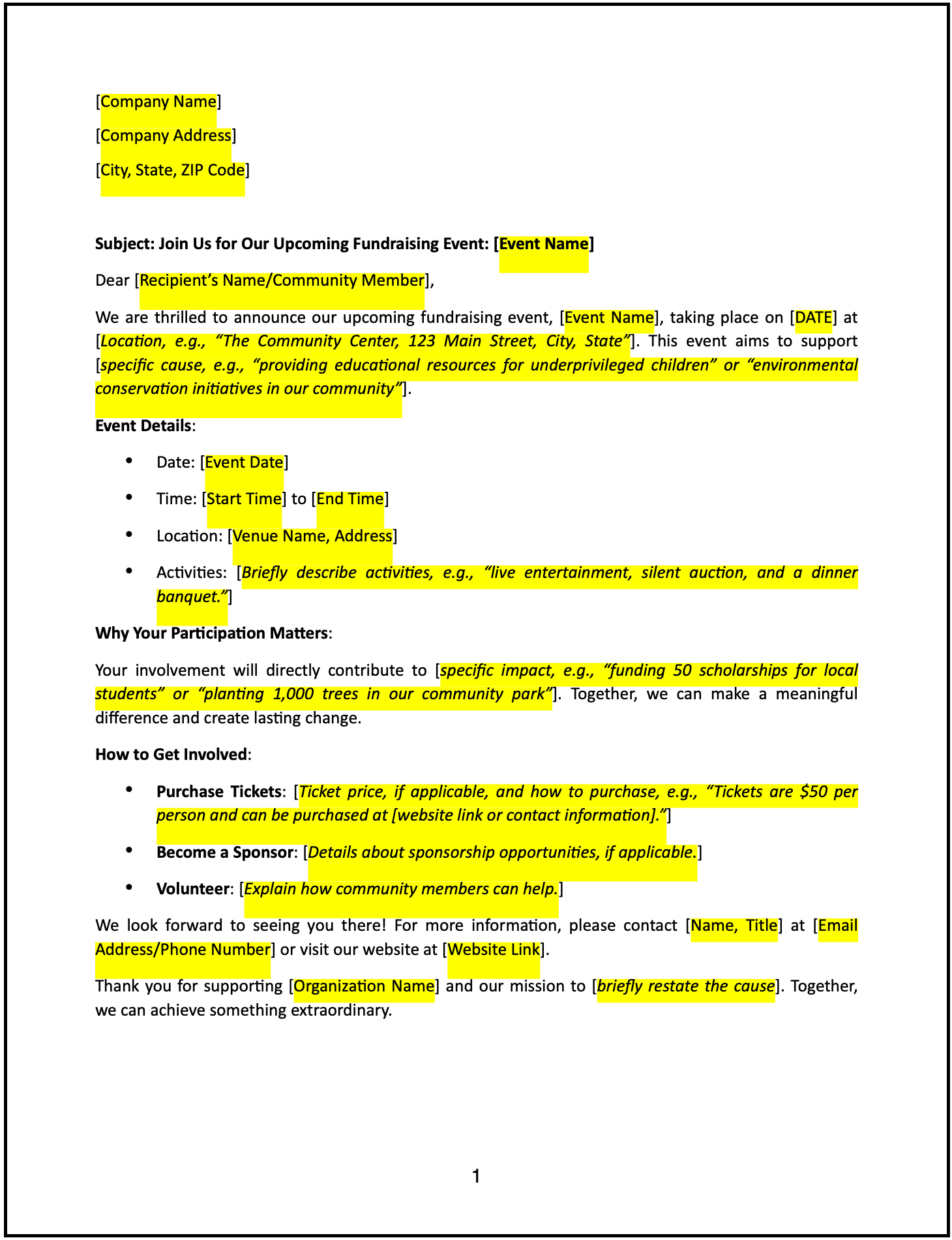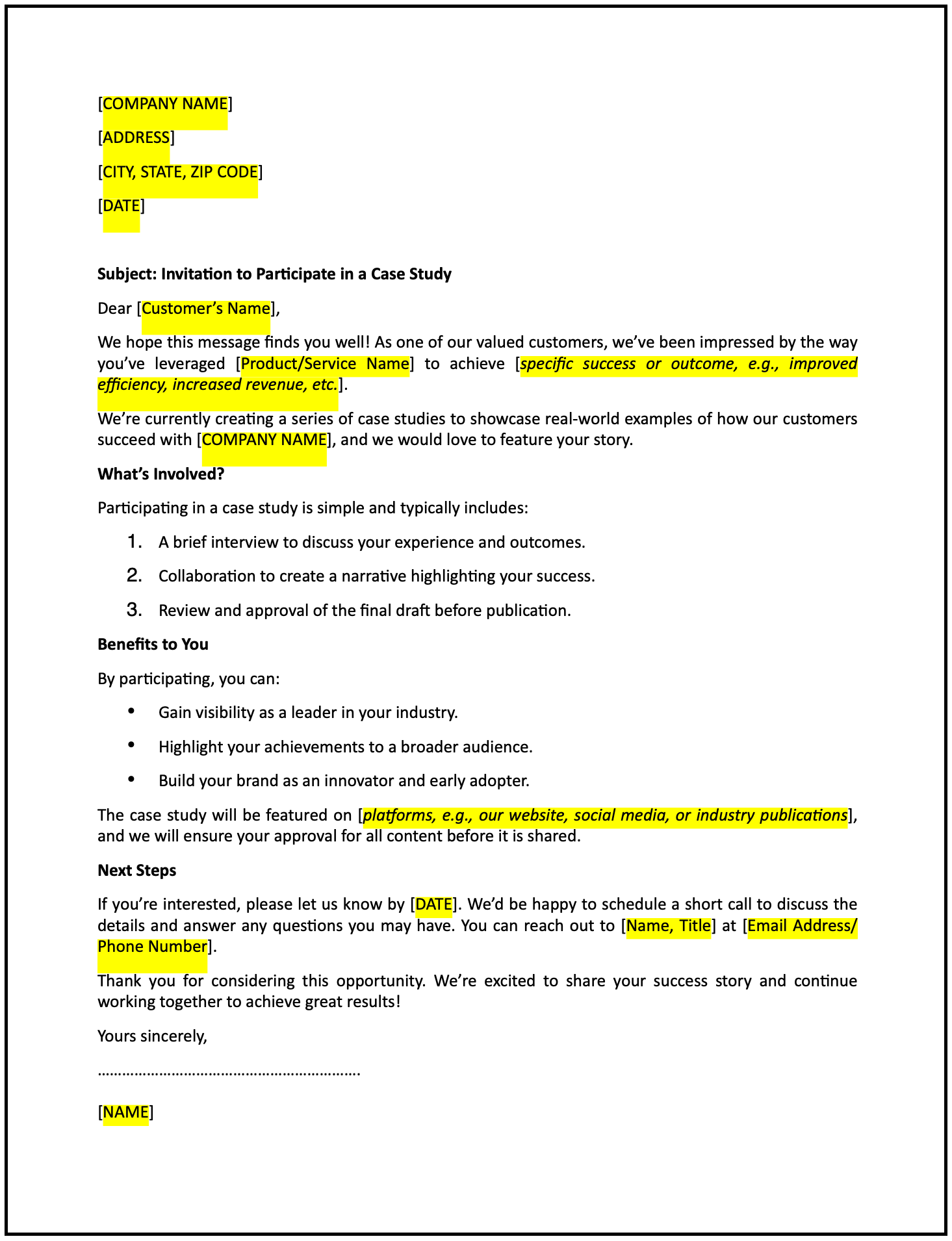Letter of a cybersecurity incident affecting customer data: Free template

Letter of a cybersecurity incident affecting customer data
A notification letter of a cybersecurity incident affecting customer data is a formal communication to inform affected customers about a breach or security issue involving their information. This letter ensures transparency, provides details of the incident, and outlines steps being taken to mitigate the impact and prevent future occurrences.
How to use this letter of a cybersecurity incident affecting customer data
- Open with acknowledgment: Begin by informing the customer about the incident and expressing the organization’s commitment to transparency and security.
- Provide details of the incident: Clearly explain what occurred, including the nature of the breach, the date it was detected, and the data potentially affected.
- Outline the response: Describe the immediate actions taken to contain the breach, investigate its cause, and enhance security measures.
- Highlight customer impact: Explain how the incident may affect the customer and any potential risks, such as data misuse or identity theft.
- Offer guidance: Provide clear steps customers can take to protect themselves, such as monitoring accounts, changing passwords, or enrolling in credit monitoring services.
- Reaffirm commitment: Emphasize the organization’s dedication to resolving the issue and preventing similar incidents in the future.
- Maintain a professional and empathetic tone: Ensure the letter reflects accountability, understanding, and support.
- Provide contact information: Include details for customers to reach out with questions, concerns, or further assistance.
Benefits of using a letter of a cybersecurity incident affecting customer data
This letter template ensures a structured and professional way to address cybersecurity incidents while fostering trust and accountability. Here’s how it helps:
- Promotes transparency: Clearly outlining the incident builds trust and reassures customers of the organization’s integrity.
- Encourages trust: Transparent communication fosters confidence in the organization’s response to the breach.
- Reflects professionalism: A thoughtful and detailed letter demonstrates the organization’s competence and commitment to customer protection.
- Provides actionable guidance: Offering steps to protect themselves empowers customers to mitigate potential risks.
- Supports compliance: Notifying customers aligns with legal and regulatory requirements for data breaches.
Tips for writing an effective letter of a cybersecurity incident affecting customer data
- Be specific: Clearly describe the incident, including the type of breach, affected data, and steps taken to address it.
- Use professional language: Maintain a respectful and empathetic tone to reassure customers.
- Highlight actions: Emphasize the steps being taken to resolve the issue and improve security.
- Include actionable advice: Provide clear instructions for customers to protect their information and minimize risks.
- Keep it concise: Focus on the key points while ensuring the tone is professional and transparent.
Frequently asked questions (FAQs)
Q: What details should I include in this letter?
A: Include the nature of the incident, affected data, actions taken to resolve it, potential impact, and steps customers can take to protect themselves.
Q: Should I personalize the letter?
A: Personalizing the letter for affected individuals or groups ensures relevance and attentiveness.
Q: Who typically sends this letter?
A: The organization’s data protection officer, legal team, or senior leadership usually sends this letter.
Q: How formal should this letter be?
A: The tone should be professional yet empathetic, focusing on transparency and resolution.
Q: When should this letter be sent?
A: Send the letter promptly after confirming the breach and assessing its scope to ensure timely communication.
Q: Can this letter include additional resources?
A: Yes, providing links to credit monitoring services, helplines, or regulatory guidelines can enhance customer support.
Q: Is acknowledgment from the recipient required?
A: While not mandatory, encouraging acknowledgment ensures customers are aware of and understand the situation.
This article contains general legal information and does not contain legal advice. Cobrief is not a law firm or a substitute for an attorney or law firm. The law is complex and changes often. For legal advice, please ask a lawyer.


